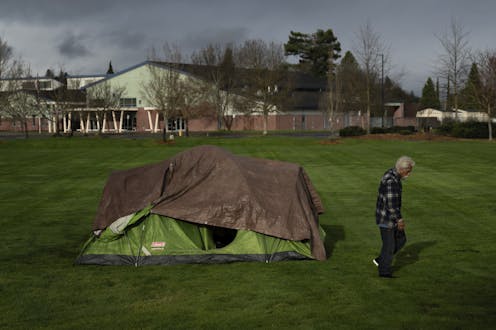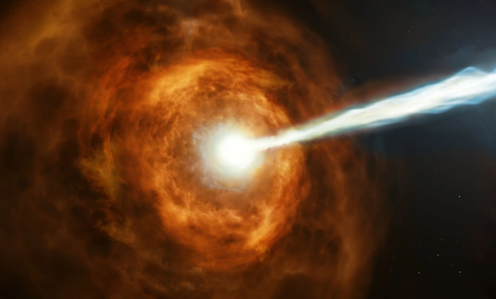Theory of Everything debunks myth of Hawking as disembodied mind
 Hollywood's version of Stephen and Jane Hawking.Working Title Films
Hollywood's version of Stephen and Jane Hawking.Working Title FilmsEarly in The Theory of Everything, the student Stephen Hawking strides across the grounds at Cambridge University in the 1960s, his face dreamy. He is lost in thought about the nature of time.
Then he trips and smacks his head on the concrete, cracking his glasses and bruising his face.
It’s a pivotal incident in the film, as it triggers the battery of tests that lead to his diagnosis of Lou Gehrig’s disease and the prediction that he had only two years to live.
The rest of the film follows the British cosmologist as he confounded that grim forecast. It dramatizes how he achieved renown within physics because of his ground-breaking 1970s work on black holes.
In less detail, the movie goes on to show how he became a pop culture star after A Brief History of Time, his 1988 explanation of cosmology for nonspecialists, became the bestselling general science book ever.
As he’s grown older, Hawking has become progressively weaker as his condition wasted his muscles, but his brilliant mind continued to whir. In the process, a dominant myth took shape around him, a myth that presented to wider society a misleading view of the physicist and his research.
 Stephen Hawking’s ALS has left him quadriplegic. He relies on myriad technologies to communicate and travel.Jason Lee/Reuters
Stephen Hawking’s ALS has left him quadriplegic. He relies on myriad technologies to communicate and travel.Jason Lee/Reuters
The myth was best articulated by Hélène Mialet in her book Hawking Incorporated. She noted that the cosmologist is overwhelmingly presented in popular culture as an intellect “liberated from his body and seemingly emancipated from everything that clutters the mundane mind (such as emotions, values, and prejudices).”
This image of Hawking as disembodied mind has crystallized in public opinion. It’s reproduced in photographs and articles and the BBC documentary The Hawking Paradox. Moreover, the latest published biography of him was named Stephen Hawking: An Unfettered Mind.
Missing in these images are the vast networks of support systems that allow Hawking to live and work. Research students support him as he writes his papers and delivers his presentations. Nurses tend to his daily needs. Technological staff ensures he can communicate with the world. And, crucially, his family have provided decades of care and emotional support.
Yet as Mialet writes, when Hawking is presented in popular culture, these collective support systems “‘magically’ disappear.” All that remains is Hawking as a lone researcher, a pure intellect, an unfettered mind.
But The Theory of Everything debunks this myth. By showing Hawking cracking his head on the concrete, it inverts the central idea of the myth: Hawking’s mind is not free of his body, but is instead bound inextricably to it.
Moreover, the film makes Hawking’s support systems visible and vivid. His wife Jane Hawking dresses him, feeds him and cares for him. She and, later, nurse Elaine Mason teach him to communicate after a tracheotomy takes away his ability to speak. A system of technology then grants him a new, robotic voice. With these systems, his science has flourished.
The film also anchors Hawking in the physical world. Far from being a purely cerebral creature, he is shown choking on food, coughing up blood and trying in vain to count on his fingers as his muscles waste. His physical attraction to Elaine is obvious. He breaks down in tears as he tells Jane he is leaving her for Elaine.
It is not surprising that these images dominate, as the film’s source material is Jane Hawking’s biographical account of their life together, Travelling to Infinity, itself a 500-page debunking of any notion of Hawking as totally cerebral genius.
 Actor Eddie Redmayne (on the right) as university student Stephen Hawking.Liam Daniel/Focus Features
Actor Eddie Redmayne (on the right) as university student Stephen Hawking.Liam Daniel/Focus Features
The film challenges this notion from the start. One of its first scenes shows Hawking in 1963 speeding on a bike around Cambridge. As Rolling Stone wrote in its review, the scene “will be a revelation to those stuck with the image of Hawking shackled to a motorized wheelchair, his head lolling, his muscles limp, his voice computer-generated.”
I’ve traced Stephen Hawking’s development as a world famous scientist in my forthcoming book. I believe The Theory of Everything gives the most rounded picture of the man since the first sustained coverage of him in the late 1970s and early 1980s after his most significant finding: that black holes leak heat. At the time, a series of long profiles in a range of magazines from New Scientist and Reader’s Digest to Vanity Fair explored his science and his family and his collaboration with colleagues.
The film has been criticized for leaving out or glossing over important scientific details. But, for me, it illuminates a deeper truth about the work of Hawking and all scientific researchers: the creation of knowledge is an ongoing collaborative endeavor that involves vast networks of researchers, each with their own lives, each with their own systems of support.
 Stephen Hawking and Jane Wilde on their wedding day, 1965.
Stephen Hawking and Jane Wilde on their wedding day, 1965.
Dramatizing this idea, the film underlined a prescient point made in the early 1990s by the late novelist Anthony Burgess when he reviewed two early biographies of the physicist. Burgess did not identify Hawking as the books’ real star. Jane, he wrote, was “the true heroine of his story, sustained in her care of [Hawking] and their children by a profound belief in God.”
Declan Fahy does not work for, consult to, own shares in or receive funding from any company or organisation that would benefit from this article, and has no relevant affiliations.
Read more http://theconversation.com/theory-of-everything-debunks-myth-of-hawking-as-disembodied-mind-34676













